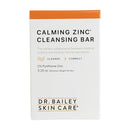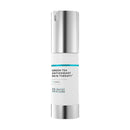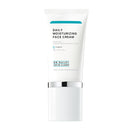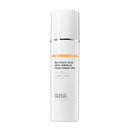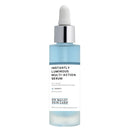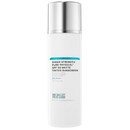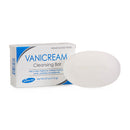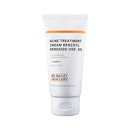SPF 50 vs. 100 - What Sunscreen Protects Skin the Best?

SPF 50 vs. 100, does it matter? It's a common question on a beach vacation with friends. What's the truth - and why??
Does SPF 100 Sunscreen Protect Better than SPF 50?
Probably NOT! But a study just published in the Journal of the American Academy of Dermatology concludes that it does. What do you believe and is the topic that simple? In my opinion, perhaps not.
You want to understand the fine points of sunscreen as you make choices about your sun protection strategy – the future of your skin health and appearance depends on it. - Dermatologist and Skin Wellness Expert Dr. Cynthia Bailey
This new study is a classic example of an industry-paid-for study. I predict that you are going to see it quoted all over the place as we go from winter sports into spring and summer. Heck, it just popped up in my email notifications for “topics” in my scientific journals, which is how I found it. I’ve torn it apart and need to share what I’ve learned with you because it’s important.
Dermatologists have said for years that SPF values higher than 30 provide only negligible protection and are really marketing ploys to get you to purchase a product.
- At SPF 30, your skin is protected from 97% of UVB rays.

- Higher SPF products provide marginal increased protection from 98-99% of UVB rays.
Important points about sunscreen and sun protection of your skin:
The protection of your skin by sunscreen depends on how much product you apply.- You must apply 2mg/cm2 which is a shot glass full of product if you are of average size and wearing a bathing suit (not the easiest instructions to translate into reality).
- When relying on product alone for extended sun protection, you are supposed to reapply every 2 hours in the sun and after water exposure or rubbing product off your skin with clothing or a towel.
Additionally, the type of active ingredients determines if the product breaks down while neutralizing UV rays or not.
- Chemical actives, such as those used in this study, do break down while working to protect you.
- Titanium dioxide breaks down to some extent.
- Mineral zinc oxide pretty much does not break down to any significant extent.
My analysis of this new, sunscreen study:
This was a well-structured study from a scientific method’s perspective.
- Fair-skinned adult snow boarders and skiers in high-altitude Vail Colorado were properly randomized and all studied on one day.
- They applied Neutrogena’s Ultra Sheer Dry-Touch SPF 100 or Banana Boat Sport Performance SPF 50 to either the right or left side of their face.
- The products were unknown to them and the sides of the face each product was applied to varied among the participants.
- This study has practical, real-life applications because the subjects were allowed to apply their normal amount of sunscreen, and to reapply as they normally would.
- They were on the slopes all day (average of 6.1 hours) and reapplied an average of once during that time.
- The study endpoint evaluated was the amount of redness seen on their skin by a board-certified dermatologist the day after being on the slopes.
- The amount of product used was also compared among the participants and was found to be consistent among the two sunscreens studied.
Curious elements of the study findings:
The subjects did not apply the recommended amount or reapply as we direct.
We dermatologists know this happens and is simply part of the reality we work with when teaching people about sun protecting their skin. Almost no one puts enough sunscreen on or reapplies as directed. Sunscreen as sun protection is inconvenient. For years, we have said that maybe having higher concentrations of sunscreen actives is good in this context because when someone applies too little sunscreen, maybe they are getting enough protection when they use higher SPF products. It may be true.
55.3% of subjects counted who had used the Neutrogena product had less redness. But does that mean they had better sun protection?
- Dermatologists looked at the subjects’ skin the day after they were on the slopes and assessed it for redness. Why redness is considered to be only due to sunburn and not windburn is unclear to me. Chapping from windburn can also present as redness and it is not possible, in my opinion, to separate windburn from sunburn in many cases. This is relevant because the two products studied have very different base creams. The Johnson & Johnson Neutrogena product has dimethicone as one of the highest concentration base ingredients. The Banana Boat product has the ingredient listed much farther down in the ingredient list. Dimethicone acts to help protect skin barrier from harsh wind and solvent exposures.
- 23 of the 199 subjects (12%) were excluded because no difference in redness was visible between their right and left sides of their face. I am not sure why that choice was made in the analysis; I would think this is an important endpoint to know.
Sunscreen Conclusions You’ll See in the Media
Based on this, the authors of the study have made conclusions you will see in the media and advertising, they state:
“The results of the current study demonstrate that the SPF 100+ sunscreen provided a level of enhanced sunburn protection that was clearly observable following a single period of exposure. Erythema severity was diminished on the SPF 100+ protected side.”
I am not sure that is the only conclusion, and I take this study with a big grain of salt. I predict that you will be seeing it quoted as we go into spring and summer and marketing dollars are put to promulgating the conclusion, but:
- I think that windburn and product base need to be considered a reason for less redness.
- I think the exclusion of the 23 people who demonstrated no difference in redness is curious.
- I’m also not a fan of chemical sunscreens and have entirely different recommendations for comprehensive sun protection based on watching what works for my patients in their real lives.
You are reading this so I know that you’re motivated to protect your skin. This study, in my opinion, confuses the topic even more.
In my opinion:
I know that the study was funded by Johnson & Johnson, makers of one of the products. J&J owns Neutrogena, Aveeno, Clean and Clear, Roc, and other consumer brands. J&J also owns Janssen Pharmaceuticals.
In my 35+ years in dermatology, I’ve learned to be very skeptical with industry-sponsored studies about sunscreen and skin care in general! - Dr. B
In fact, studies like this rankle me. I’ve seen my patients swayed to the detriment of their health by marketing claims that grow from these types of studies.
Take a look at the two sunscreens studied. Both are made with chemical sunscreen ingredients. Neutrogena Ultra Sheer Dry-Touch Broad Spectrum SPF 100 Neutrogena is a Johnson & Johnson company, the company who funded the study. Ingredient list for this product:
Active Ingredients: Avobenzone 2%, Homosalate 15%, Octinoxate 7.5%, Octisalate 5%, Oxybenzone 6%.
Inactive Ingredients: Water, Silica, Dimethicone, Adipic Acid / Diethylene Glycol / Glycerin Crosspolymer, VP-Hexadecene Copolymer, Hydroxyethyl Acrylate/Sodium Acryloyldimethyltaurate Copolymer, Glycerin, Oat (Aveena Sativa) Kernel Extract, Squalane, Ascorbyl Palmitate, Retinyl Palmitate, Tocopheryl Acetate, BHT, Cetyl Dimethicone, Bisabolol, Dipotassium, Glycyrrhizate, Glyceryl Stearate, PEG-100 Stearate, Polysorbate 60, Tetrasodium EDTA, Butylene Glycol, Trimethylsiloxysilicate, Xanthan Gum, Benzyl Alcohol, Isopropylparaben, Isobutylparaben, Butylparaben, Phenoxyethanol, Fragrance.
Banana Boat Owned by Edgewell Personal Care which also owns Shick, Wilkinson Sword, Edge, Skintimate, Hawaiian Tropic, Playtex, Carefree, Stayfree, OB feminine products, and Bll Dog men’s skin care among others.
Active Ingredients: Avobenzone (3.0%), Homosalate (10.0%), Octocrylene (6.0%).
Inactive Ingredients: Water,Cetearyl Alcohol,Stearyl Alcohol,Glycerin,Acrylates/C12-22 Alkyl Methacrylate Copolymer,Caprylyl Glycol,Cetyl Alcohol,Carbomer,Ceteth-10 Phosphate,Dicetyl Phosphate,Coco-Glucoside,Xanthan Gum,Disodium EDTA,Hydrogenated Methyl Abietate,Lauryl PEG-8 Dimethicone,Phenylisopropyl Dimethicone,Polyglyceryl-3 Stearate/Isostearate/Dimer Dilinoleate Copolymer,Sodium Ascorbyl Phosphate,Tocopheryl Acetate,Aloe Barbadensis Leaf Juice, Phenoxyethanol, Methylparaben, Propylparaben.
These are chemical sunscreens and of course they don't work well!
I don’t recommend chemical sunscreens. I recommend mineral zinc oxide sunscreens. - Dermatologist Dr. Bailey
In my observation, zinc oxide does a more reliable job sun protecting skin. My patients who use mineral zinc oxide products have less tanning, suffer less burns and show less signs of wrinkling, uneven pigmentation and precancerous and cancerous lesions.
I also encourage my patients to use comprehensive sun protection when possible that includes covering as much skin as possible with clothing and seeking or creating shade.
On ski slopes, this may not be easy. That makes the choice of sunscreen and the application techniques all the more important.
Important facts about UV rays and sunburn when skiing:
- Know that in the winter, UVB (sunburn ray) is less than in summer.
- In summer, UVB intensity is much higher.
- At high altitudes UVB is also more intense.
- UVA is out intensely all year and the broad spectrum term relates to how well a product blocks UVA.
My recommendations for skiers and snowboarders is to use a high-performance and high-concentration zinc oxide product before hitting the slopes.
I recommend a product like my water resistant pure mineral Sheer Strength Pure Physical SPF 30 Sunscreen. Yep, 30! Reapply it and freshen up SPF with my Sheer Strength Pure Physical SPF 30 Powder Sunscreen, it's easy to keep in your pocket.
I would also pre-load my skin with antioxidants under my sunscreen.
Antioxidants will help to fight free-radical damage from a day of intense exposure. I would apply Green Tea Antioxidant Skin Therapy under the Sheer Strength Sunscreens. Vitamin C is also a good antioxidant but will sting if the skin starts to become wind burned and chapped. Get more information on my sun protection advice to prevent sun damage of your skin.
Don't forget to sign up to get the latest insights from a dermatologist on having healthy, young-looking skin!
Reference:
Williams JD, Maitra P, Atillasoy E, Wu M-M, Farberg AS, Rigel DS, SPF 100+ sunscreen is more protective against sunburn than SPF 50+ in actual-use: Results of a randomized, double-blind, split-face, natural sunlight exposure, clinical trial, Journal of the American Academy of Dermatology (2018), doi: 10.1016/j.jaad.2017.12.062.


